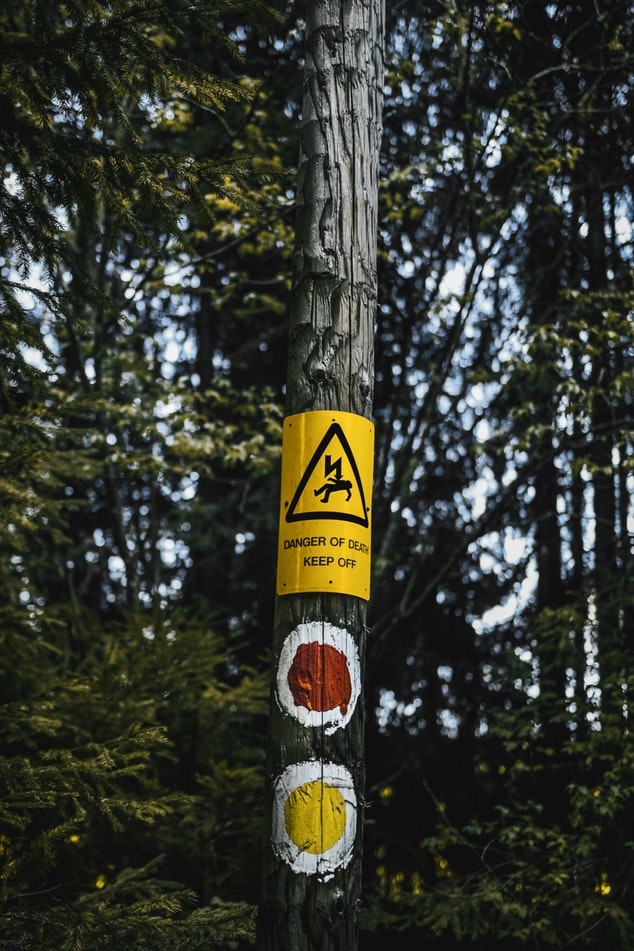
Warning signs – commonly referred to as caution or danger signs - fall under specific categories, namely electrical, hazardous materials, environmental dangers and dangerous environments. As a result, these signs are immensely important as they warn against workplace risks that have a direct impact on human life. When proper warning sign protocols are not followed, the costs are immensely high in both cost and human life.
Before deep-diving into the costs of warning signs, it’s important to be clear on each type of sign and their meanings:
- Warning signs – may result in injury or death
- Caution signs – tends to be damage to a product
- Danger signs – a major threat to life
The costs of improper electrical signs
There was a 15% increase in workplace electrical fatalities in 2015-16, a major sign of a worrying trend: ignorance of proper warning signs. The majority of these injuries – 53% - took place in the construction industry, with younger workers 2.3x more likely to be the victims of this type of injury.
Electrical injuries can fall under a wide umbrella of terms, including electrical shock, thermal burns, muscle injury and electrical burns. These injuries can be properly circumvented by proper use of workplace danger signs and a firm understanding of their meanings.
On average, those who suffer from electrical injuries take 5 days off work. When extrapolated over the working population, this equates to hundreds of thousands of days lost in sick pay and manpower. In essence, signage pays.
The costs of improper hazardous signs
Hazardous materials account for a significant portion of workplace injuries in the UK. Usually, these are long-term injuries, with the HSE estimating that, yearly, around 13,000 deaths from occupational lung disease and cancer are caused by past exposure, primarily to chemicals and dust, at work.
Much of this exposure is via accidental spills, usually from human error and materials not being labelled properly. The result is a cost in the millions for NHS treatment. Whenever a hazardous material or chemical solution is spilled, it must be properly signposted and quarantined. There should be a process in place for safe cleaning and removal should be strictly followed.
Biohazard information is difficult to obtain given its place in geopolitical politics and public safety. Labs, though, despite their strict protocols, had 400 accidents with dangerous pathogens over a 7-year period, with 196 of these cases coming from a “loss of containment” with 77 spills.
Spills and accidental losses of containment usually come from incorrect signposting and a lack of training, potentially costing a lot of money, lives and, in the case of biohazards, a nation’s safety.
The costs of improper environmental signs
Properly signposting and labelling hazards in the environment is of paramount importance for workplaces, especially where working at height is common. In 2013-2018, 26% of all fatal injuries in the workplace came from falls from height, most of which could have been avoided with proper environmental warning signs.
The second-highest cause of workplace fatalities is being struck by a moving vehicle. Again, these injuries could have been avoided through proper environmental signage, particularly on factory floors where workers need to be made aware of forklift traffic channels and loading bays.
Label Source has a number of warning signs suited to environmental hazards which can, when augmented with proper training and re-training, help prevent this number of fatalities from growing.
Workplaces must ensure warning signs are used if they are required; an employer simply cannot avoid putting labels in place.
These types of consequences are not short-term, either. Asbestos, for example, is still a major issue in the modern world, with its effects coming from both improper signage of asbestos areas, as well as poor safety equipment or removal.
Asbestos should always, without excuse, be labelled with an appropriate asbestos sign. We stock plenty of these at Label Source in a variety of sizes and designs.
Label Source has a 25-year pedigree in the industry, so browse our extensive range of hazard warning signs and follow us on Facebook and Twitter to keep up with the latest health and safety news.